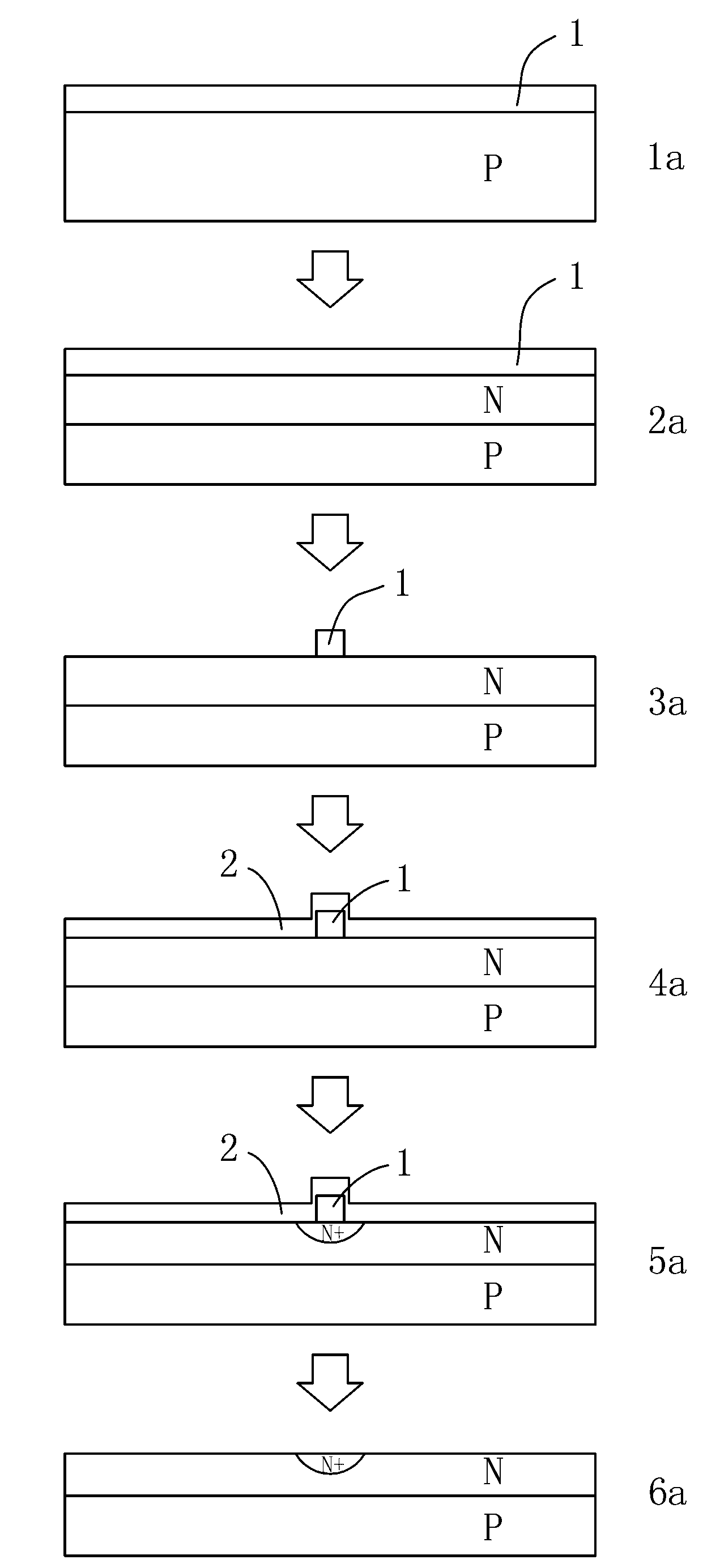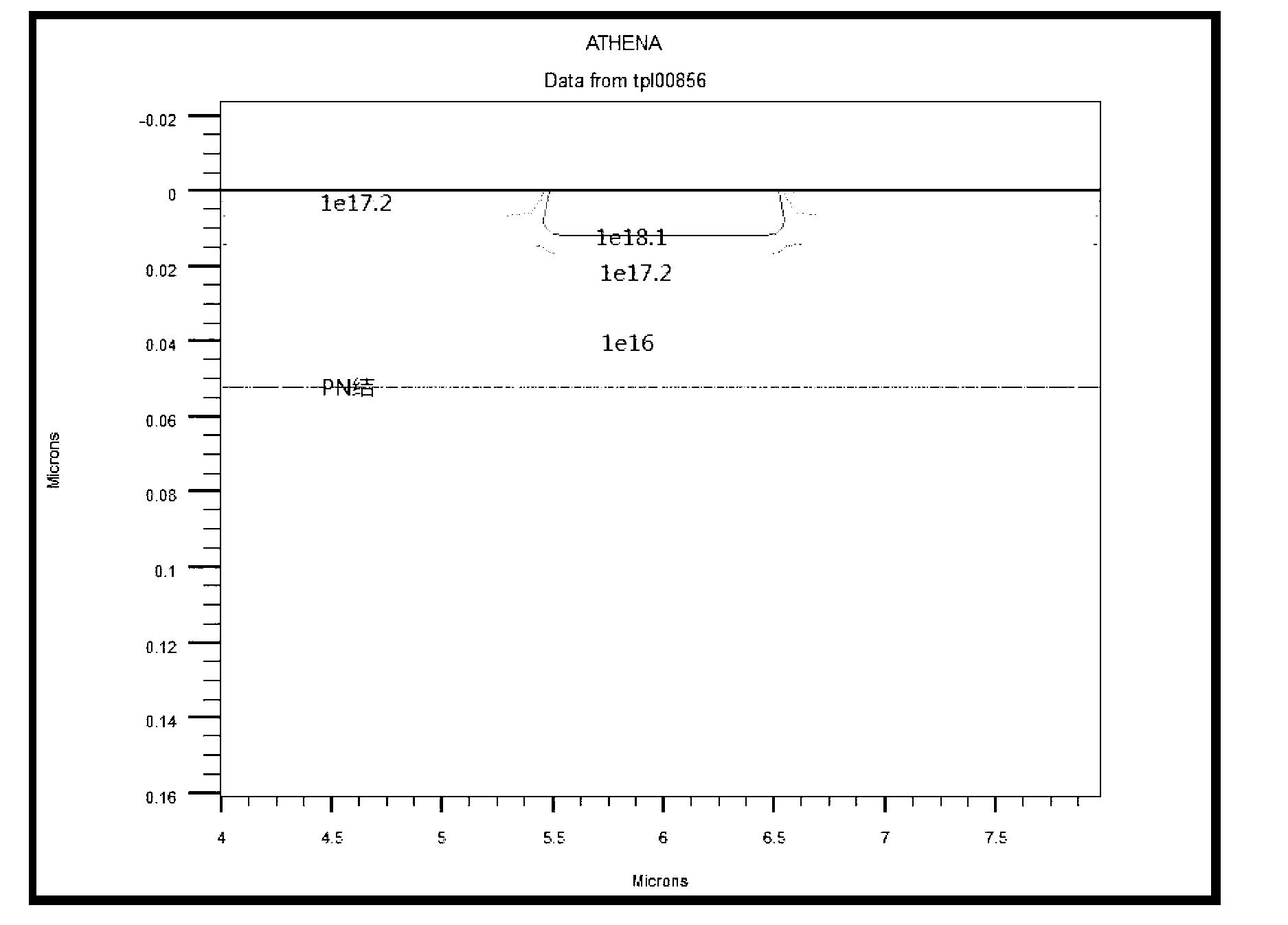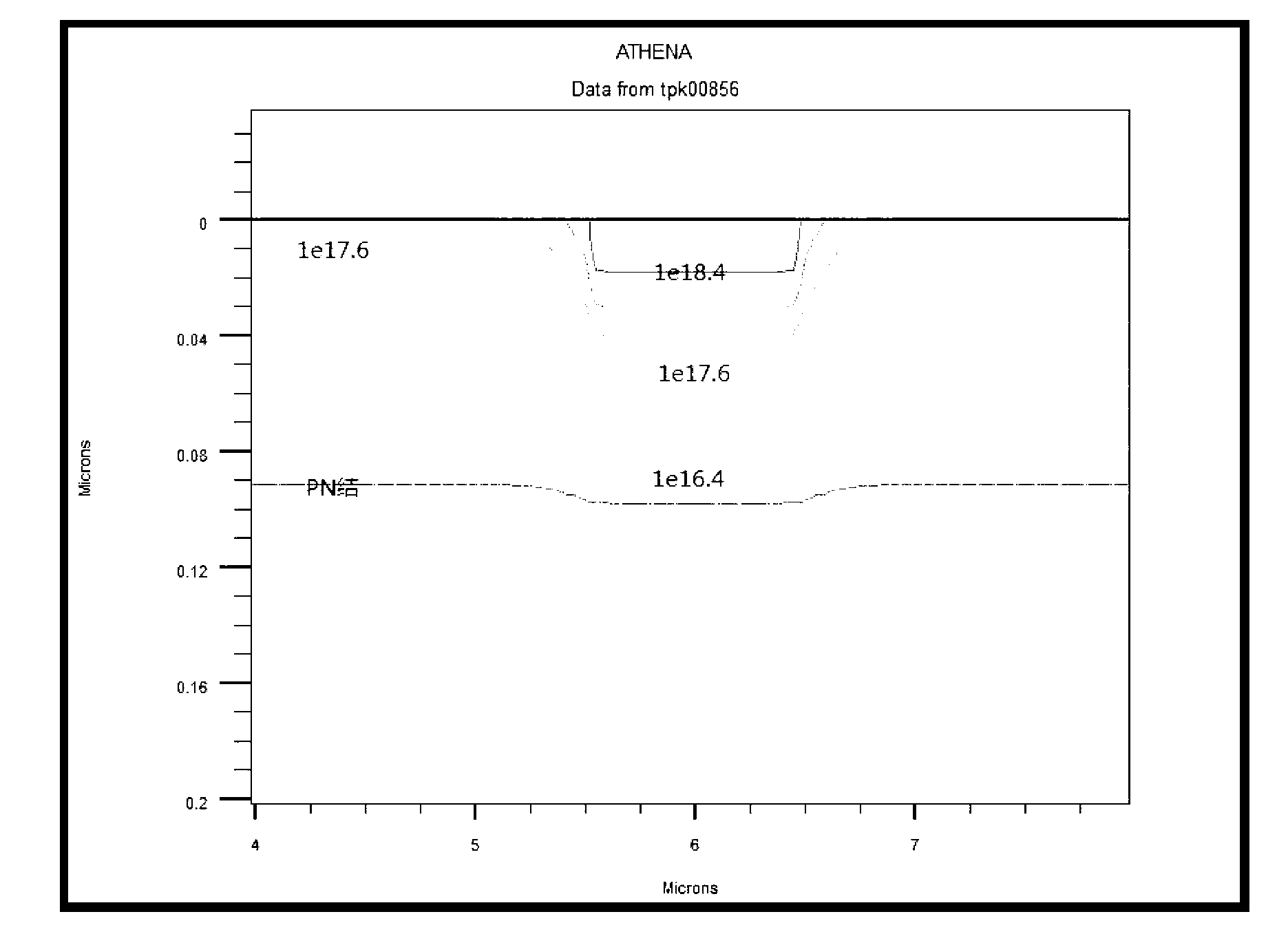Selective doping method for solar cell
A solar cell and selective technology, applied in circuits, photovoltaic power generation, electrical components, etc., can solve the problems of difficult control of the secondary distribution of impurities, uneven surface diffusion, and reduced battery efficiency, so as to achieve stable impurity distribution and reduce Destructive effect, effect of enhancing effect
- Summary
- Abstract
- Description
- Claims
- Application Information
AI Technical Summary
Problems solved by technology
Method used
Image
Examples
Embodiment 1
[0035] Such as figure 1 Shown is a schematic flow chart of the selective doping method for solar cells of the present invention, which specifically includes the following steps:
[0036] 1a. Deposit a layer of phosphosilicate glass 1 (silicon dioxide film containing phosphorus element) with a thickness of about 0.05 microns on the upper surface of P-type single crystal silicon by magnetron sputtering. The phosphorus element in phosphosilicate glass 1 The concentration is 1e19 / cm 3 ;
[0037] 2a. Perform high-temperature diffusion on the deposited silicon wafer, so that the phosphorous elements in the phosphosilicate glass 1 diffuse into the silicon wafer to form a PN junction; the temperature of the high-temperature diffusion is 900° C., and the time of high-temperature diffusion is 5 minutes;
[0038] 3a. Retain the phosphosilicate glass 1 in the top electrode region by screen printing, and remove the phosphosilicate glass in other regions on the silicon wafer with hydroflu...
Embodiment 2
[0044] The steps of this example are the same as those of Example 1, the difference lies in the process parameters of high-temperature diffusion in dry oxygen environment in step 5a (step 5). In this example, the process temperature of high-temperature diffusion is 1000°C, and the duration is 5 minutes . After using the simulation software to simulate the second method of this embodiment, the impurities in the silicon wafer can be seen image 3 . The curves in the simulation result graph respectively represent the concentration of the doping element (phosphorus) and the position of the PN junction.
Embodiment 3
[0046] The steps of this example are the same as those of Example 1, the difference lies in the process parameters of high-temperature diffusion in dry oxygen environment in step 5a (the fifth step). In this example, the process temperature of high-temperature diffusion is 1100°C, and the duration is 2 minutes . After using the simulation software to simulate the third method of this embodiment, the impurities in the silicon wafer can be seen Figure 4 . The curves in the simulation result graph respectively represent the concentration of the doping element (phosphorus) and the position of the PN junction.
[0047]Comparing the three embodiments of the present invention, it can be seen from the simulation results that the PN junction of the battery is continuously deepened with the increase of the high-temperature diffusion temperature of the reverse diffusion process. The impurity concentration on the surface of the battery first increases and then decreases, but the impuri...
PUM
| Property | Measurement | Unit |
|---|---|---|
| Thickness | aaaaa | aaaaa |
| Thickness | aaaaa | aaaaa |
| Thickness | aaaaa | aaaaa |
Abstract
Description
Claims
Application Information
 Login to View More
Login to View More - R&D
- Intellectual Property
- Life Sciences
- Materials
- Tech Scout
- Unparalleled Data Quality
- Higher Quality Content
- 60% Fewer Hallucinations
Browse by: Latest US Patents, China's latest patents, Technical Efficacy Thesaurus, Application Domain, Technology Topic, Popular Technical Reports.
© 2025 PatSnap. All rights reserved.Legal|Privacy policy|Modern Slavery Act Transparency Statement|Sitemap|About US| Contact US: help@patsnap.com



